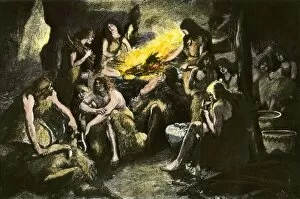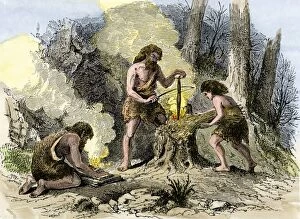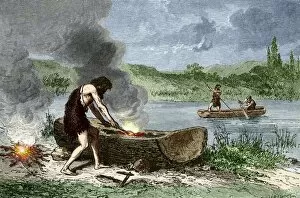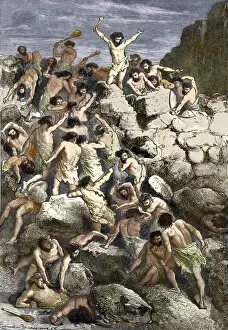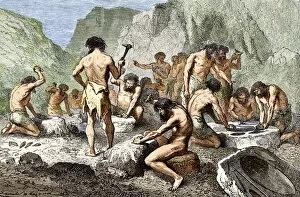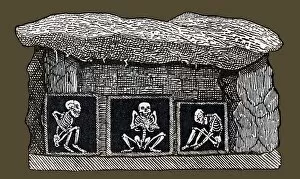Primitive Human Collection
"Unveiling the Marvels of Primitive Humans: A Glimpse into Prehistoric Life" Step back in time and witness the extraordinary journey of our ancient ancestors
All Professionally Made to Order for Quick Shipping
"Unveiling the Marvels of Primitive Humans: A Glimpse into Prehistoric Life" Step back in time and witness the extraordinary journey of our ancient ancestors, the prehistoric cave-dwellers. These early humans, with their remarkable ingenuity and resourcefulness, laid the foundation for our modern civilization. Venturing beyond mere survival, they discovered a revolutionary concept - agriculture. With great determination, these pioneers began harvesting crops, forever changing the course of human history. But it didn't stop there; primitive humans harnessed nature's power through friction to create fire. This pivotal discovery brought warmth and light into their lives while opening doors to countless possibilities. Intriguingly adept at craftsmanship, early humans delved into pottery-making. Their skilled hands molded clay into beautiful vessels that served both practical purposes and artistic expression. As time progressed, these innovative beings embarked on yet another groundbreaking endeavor - smelting bronze. Through intense heat and meticulous craftsmanship, they unlocked a new era of tools and weapons that propelled humanity forward. Not content with bronze alone, early humans pushed boundaries further by mastering iron smelting techniques. The resulting metal revolutionized weaponry and transformed societies across continents. Their thirst for exploration extended even onto vast bodies of water as primitive humans built boats to navigate rivers and seas alike. These intrepid sailors charted unknown territories with unwavering courage. Survival meant more than just innovation; it required protection too. Early humans honed their skills in crafting weapons – spears, bows or arrows – ensuring safety against formidable predators or rival tribes. Yet amidst life's triumphs came moments of reflection; prehistoric human funerals were solemn occasions where communities paid tribute to departed loved ones with rituals steeped in reverence for life's fleeting nature. Today we stand on the shoulders of those who paved our way—primitive humans whose indomitable spirit shaped civilizations as we know them today. Let us honor their legacy and marvel at the extraordinary journey that led us here.

